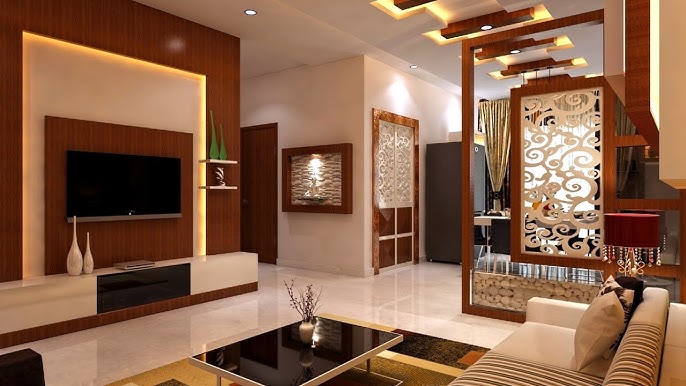Change Your Home With Necessary Principles of Inside Style and Visual Appeals
The art of transforming your home with the necessary concepts of interior decoration and visual appeal requires a thoughtful strategy that integrates shade, balance, and spatial awareness. By comprehending the effect of color concept and the relevance of appearance and patterns, one can develop spaces that are not only aesthetically appealing however additionally deeply individual. Attaining this stability involves greater than simple design; it includes a calculated arrangement and a keen understanding of how each element interacts within a room. As we discover these foundational ideas, consider just how they may redefine your understanding of home and personal expression.
Understanding Shade Theory
Color concept is an essential aspect of indoor design that significantly affects mood, assumption, and overall visual. Comprehending the concepts of color concept enables developers to create rooms that resonate mentally with occupants while satisfying functional needs (interior design firms). Shades can be categorized right into three main kinds: primary, additional, and tertiary. Each category plays a vital role in developing consistency within a space.
The emotional influence of colors is profound; cozy tones such as reds and oranges evoke energy and warmth, while trendy tones like blues and greens advertise peace and serenity. The use of complementary colors improves aesthetic passion, developing striking contrasts that can elevate a room's appeal.
Neutral colors, on the other hand, serve as a versatile backdrop, enabling other style aspects to radiate. It is necessary to consider factors such as lighting and the room's purpose when selecting a color palette, as these can alter the perception of colors throughout the day.
Ultimately, a well-considered color design can change a room, cultivating a feeling of convenience and design that lines up with the inhabitants' choices. Proficiency of color theory is, for that reason, a crucial skill for any indoor developer intending to create harmonious and welcoming settings.
Attaining Balance in Design
Just how can developers achieve a feeling of balance in their rooms? Attaining balance in design is essential to developing unified insides.
Unbalanced equilibrium, on the other hand, counts on differing components that still accomplish a cohesive look. This strategy enables even more vibrant and informal arrangements, supplying passion while preserving balance. By meticulously picking varying sizes, shades, and structures, designers can produce an aesthetically engaging room that feels well balanced yet energised.
Radial balance stresses a main centerpiece with aspects radiating outward. This design is generally seen in round formats, where furniture and style produce a natural surround that draws the eye internal.
Ultimately, attaining equilibrium calls for thoughtful factor to consider of scale, percentage, and the connections between components. miami interior design. By masterfully using these equilibrium principles, developers can change areas right into atmospheres that really feel both visually pleasing and functionally unified, boosting the overall experience for occupants
Importance of Spatial Recognition

An eager feeling of spatial understanding permits designers to identify prime focus within a space, leading the visitor's attention to key functions while maintaining a total sense of unity. It likewise helps in the critical positioning of illumination, which can substantially influence the perception of room and mood. Comprehending spatial partnerships enables the developer to provide to the you can look here particular needs of residents, ensuring that each area offers its designated function without endangering appearances.
Ultimately, spatial recognition is vital for making the most of the potential of any indoor room. By carefully taking into consideration the interplay between measurements, layout, and feature, designers can Related Site create environments that not just satisfy useful requirements yet also stimulate a feeling of comfort and elegance, improving the overall living experience.
Integrating Texture and Patterns
Embracing a diverse variety of structures and patterns can substantially improve the aesthetic and responsive appeal of an indoor room. The tactical use different products-- such as timber, metal, material, and stone-- develops deepness and passion, making a space really feel a lot more welcoming and vibrant. Incorporating smooth surfaces with rough textures can establish a balance that draws the eye and engages the detects.
When integrating patterns, consider both scale and rep. Huge patterns can function as focal factors, while smaller sized, subtle layouts can match other components without frustrating the space. Layering patterns, such as pairing flower pillows with striped throws, adds complexity and a feeling of harmony if implemented thoughtfully.
It is likewise vital to keep a natural shade palette, ensuring that structures and patterns interact instead of compete for focus. By picking a few essential textures and patterns, you can produce an unified aesthetic that mirrors your individual style while enhancing the general ambiance of the space. Ultimately, the mindful incorporation of these components can change a mundane space into an innovative atmosphere rich with character and heat.
Personalizing Your Room
Producing an area that mirrors your personality is crucial to accomplishing a truly inviting environment. Customization in indoor style permits you to infuse your special design and interests into your home, transforming it from a mere shelter right into a refuge that talks to that you are. Begin by choosing a shade scheme that resonates with your feelings-- strong colors can stimulate, while soft tones offer harmony.
Include art work and style that show your passions, whether it be travel, nature, or abstract ideas. Displaying individual collections, such as publications, pictures, or souvenirs, can evoke treasured memories and produce prime focus within a space. Furthermore, take into consideration tailoring functional pieces, like upholstered furniture, to line up with your visual preferences.

Final Thought
Finally, the transformation of a home through the essential concepts of interior design and visual appeal requires a detailed understanding of color concept, balance, spatial understanding, appearance, and customization. Each element adds significantly to creating an unified and useful living atmosphere - miami luxury interior design. By thoughtfully integrating these principles, individuals can enhance the aesthetic allure and emotional resonance of their areas, eventually cultivating a home that mirrors unique identities while giving convenience and usefulness